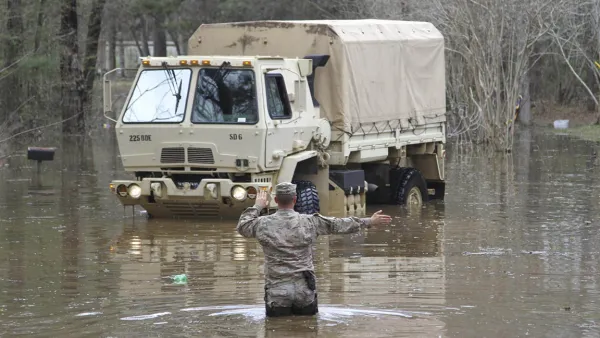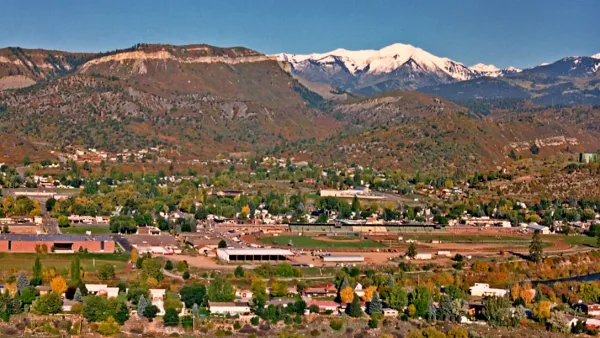The U.S. Department of Agriculture in January announced an ambitious, and only partially funded, new plan to reduce wildfire risks for communities around the United States.

The Biden administration recently announced a new federal program, with funding from the Infrastructure Investment and Jobs Act (IIJA), to thin forests and reduce wildfire risk on 50 million acres in the United States.
A "Wildfire Risk Strategy" [pdf] announced in January by the U.S. Department of Agriculture would spend an estimated $20 billion over 10 years for work in national forests, in addition to $30 billion for work on other federal, state, tribal, and private lands.
Agriculture Secretary Tom Vilsak announced the plan, with the longer title "Confronting the Wildfire Crisis: A Strategy for Protecting Communities and Improving Resilience in America’s Forests," with a press release on January 18.
"The strategy outlines the need to significantly increase fuels and forest health treatments to address the escalating crisis of wildfire danger that threatens millions of acres and numerous communities across the United States," according to the press release.
In addition to the new levels of funding, the plan also proposes a change to wildfire prevention strategy by focusing risk mitigation at the wildland-urban interface—specifically what Forest Service scientists have identified as high risk "firesheds, described by the press release as "large, forested landscapes with a high likelihood that an ignition could expose homes, communities, infrastructure and natural resources to wildfire."
As noted in an article by Alyssa Lupkat for the New York Times, the Agriculture Department is proposing to spend $655 million annually on forests for the first five years of the new Wildfire Risk Strategy. "That money would be added to $262 million that the U.S. Forest Service had already allocated to the task for this year," according to Lupkat. With an initial $3 billion from the IIJA, the full $50 billion of spending proposed by the ten-year plan has not yet been allocated.
FULL STORY: Secretary Vilsack Announces New 10 Year Strategy to Confront the Wildfire Crisis

National Parks Layoffs Will Cause Communities to Lose Billions
Thousands of essential park workers were laid off this week, just before the busy spring break season.

Retro-silient?: America’s First “Eco-burb,” The Woodlands Turns 50
A master-planned community north of Houston offers lessons on green infrastructure and resilient design, but falls short of its founder’s lofty affordability and walkability goals.

Delivering for America Plan Will Downgrade Mail Service in at Least 49.5 Percent of Zip Codes
Republican and Democrat lawmakers criticize the plan for its disproportionate negative impact on rural communities.

Test News Post 1
This is a summary

Test News Headline 46
Test for the image on the front page.

Balancing Bombs and Butterflies: How the National Guard Protects a Rare Species
The National Guard at Fort Indiantown Gap uses GIS technology and land management strategies to balance military training with conservation efforts, ensuring the survival of the rare eastern regal fritillary butterfly.
Urban Design for Planners 1: Software Tools
This six-course series explores essential urban design concepts using open source software and equips planners with the tools they need to participate fully in the urban design process.
Planning for Universal Design
Learn the tools for implementing Universal Design in planning regulations.
EMC Planning Group, Inc.
Planetizen
Planetizen
Mpact (formerly Rail~Volution)
Great Falls Development Authority, Inc.
HUDs Office of Policy Development and Research
NYU Wagner Graduate School of Public Service





























